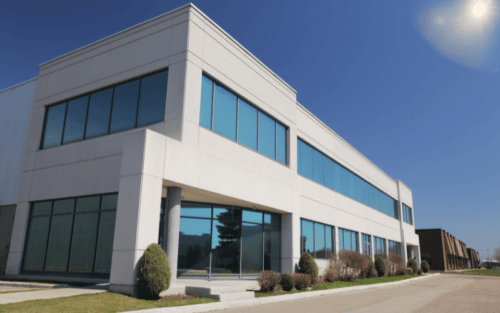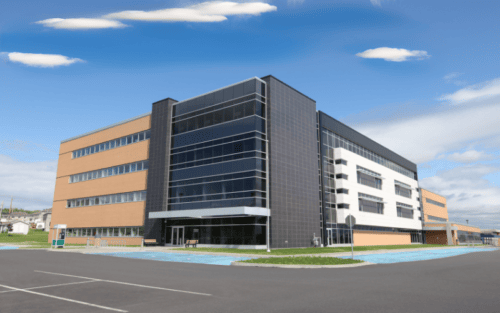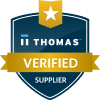
Thermal barrier coatings play an essential role in maintaining your building’s envelope integrity and energy efficiency. The building envelope refers to the physical separator between your building’s interior and the outdoor environment, including walls, roof, windows, and doors. As you seek long-term solutions for your structure, understanding how ultraviolet (UV) radiation affects these protective systems is fundamental to making informed decisions about building maintenance and protection.
The sun’s ultraviolet rays pose a constant environmental challenge to building materials. With your structure continuously exposed to sunlight throughout its lifespan, the cumulative effect of UV radiation on protective coatings demands careful consideration when selecting products for long-term structural protection.
How UV Radiation Impacts Thermal Barrier Coatings
UV radiation is a primary environmental challenge to exterior building materials. When thermal barrier coatings face prolonged sunlight exposure, several changes occur on both microscopic and visible levels. The severity of these effects varies based on coating quality, geographic location and specific UV index levels throughout the year.
Physical Deterioration
When exposed to UV radiation over time, the outer layer of thermal barrier coatings begins to break down. This visible deterioration affects both the appearance and performance of your coating. You may notice:
- Chalking: Formation of powdery residue on the surface as the binder deteriorates
- Color fading: Loss of original pigmentation and aesthetic appeal
- Reduced elasticity: Becoming brittle and prone to cracking
- Surface erosion: Gradual wearing away of the protective layer
Chemical Breakdown
Beyond what you can see, UV light attacks the chemical structure of your coating at the molecular level. These invisible changes undermine the coating’s effectiveness as ultraviolet radiation:
- Breaks polymer bonds in the coating’s structure
- Releases volatile compounds
- Reduces adhesion to the substrate
- Compromises thermal reflective properties
Performance Reduction
As UV degradation progresses, a thermal barrier coating may experience:
- Decreased thermal resistance
- Reduced ability to reflect solar radiation
- Compromised weather protection
- Shortened effective lifespan
ThermaCote®: UV-Resistant Thermal Barrier Solutions
While many conventional coatings struggle with UV degradation, high-performance weather barrier coatings like ThermaCote® are specifically formulated to withstand these challenges.
Advanced Ceramic Technology
ThermaCote® utilizes ceramic technology that provides significant advantages against UV degradation:
- Ceramic components maintain their properties even under intense sun exposure
- Unlike traditional paints that rely solely on organic binders, ThermaCote’s structure resists photochemical breakdown
- Reflective properties remain effective after years of sun exposure
The proprietary formula developed by the Sharp family since 1985 addresses the limitations of conventional coatings through materials science innovation. This water-based acrylic formula with ceramic reinforcement creates a stable molecular structure that resists the bond-breaking effects of UV radiation. With low volatile organic compounds (VOCs) – chemicals that evaporate into the air at room temperature – ThermaCote® provides a healthier solution for both applicators and building occupants.
Long-Term Performance Benefits
Buildings protected with ThermaCote® experience:
- Sustained energy efficiency through maintained reflective properties
- Consistent climate control inside the structure
- Reduced maintenance costs associated with recoating
- Extended building envelope protection
Tests show that conventional coatings may lose up to 30% of their reflective properties within five years of installation. Meanwhile, ThermaCote® maintains consistent performance throughout its lifespan, providing superior value for building owners invested in long-term protection.
Signs Your Thermal Barrier Coating May Be Suffering From UV Damage

Identifying UV degradation early can help prevent more extensive damage to your building envelope. Watch for these indicators:
Visual Cues
- Discoloration or fading from the original color
- Chalky residue when touching the surface
- Visible cracking or flaking of the coating
- Uneven appearance or sheen loss
Performance Issues
- Increased interior temperatures during sunny days
- Rising energy bills for cooling
- Water intrusion in previously protected areas
- Condensation problems within the building
Protecting Your Investment From UV Degradation
Taking proactive steps can significantly extend the life of your thermal barrier coating and maintain its effectiveness against energy transfer.
Choosing the Right Coating
Your most important decision is selecting a thermal barrier coating designed for UV resistance:
- Look for products with documented UV stability testing
- Select coatings with specific mentions of UV resistance in specifications
- Consider the track record of performance in similar climate conditions
Product certifications provide valuable insight into coating quality. ThermaCote® maintains ISO 9001:2008 certification, which means the product meets international standards for quality management systems. This certification ensures that you’ll receive consistent product quality with every application, giving you confidence in the coating’s long-term performance.
Professional Application
Even the best thermal barrier coating requires proper application:
- Surface preparation significantly impacts coating longevity
- Proper thickness application provides optimal protection
- Following manufacturer guidelines on curing times allows the coating to reach full effectiveness
Working with certified applicators ensures the product is applied according to manufacturer specifications. ThermaCote® maintains a network of certified applicators who receive specialized training in proper application techniques.
Regular Inspections
You should develop a schedule for checking your thermal barrier coating:
- Check for early signs of chalking or color change
- Examine areas with the highest sun exposure more frequently
- Document changes to track degradation rates
You should have your thermal barrier coating professionally inspected annually, especially if your property is in an area with extreme weather conditions or high UV exposure. Professional inspections can identify early signs of failure before they lead to more extensive damage.
Why ThermaCote® Outperforms Against UV Damage
ThermaCote® delivers exceptional durability even in extreme UV environments, backed by decades of real-world performance data. Our weather barrier coating maintains its protective properties through:
- Water-based acrylic formula reinforced with ceramic technology
- Low VOC composition that resists chemical breakdown
- Superior adhesion properties that prevent peeling and flaking
- Proven performance in high-UV environments worldwide
The MAS Certified Green™ designation confirms that ThermaCote® meets strict environmental standards while delivering superior performance. This certification verifies that the product maintains its integrity without releasing harmful chemicals during UV exposure.
ThermaCote® has protected buildings around the world from both thermal transfer and environmental damage since 1985. Our ISO 9001:2008 certification program ensures every batch meets the same high-quality standards, giving you confidence in long-term performance.
When you choose ThermaCote®, you get complete building envelope protection that addresses both thermal transfer concerns and the long-term effects of UV exposure that compromise conventional products.
Ready to Protect Your Building Envelope?
Don’t let UV radiation compromise your building’s thermal protection. Contact the ThermaCote® team today at contact us to schedule a consultation. Our experts will evaluate your specific structure and climate conditions to recommend the most effective application approach. With ThermaCote®, you’ll gain long-lasting protection against both thermal transfer and UV degradation, saving you money on energy costs while extending the life of your building envelope.
Frequently Asked Questions
How long do thermal barrier coatings last when exposed to UV?
When you invest in a thermal barrier coating, its lifespan will vary significantly based on quality and formulation. If you choose standard acrylic coatings, you may notice UV degradation within 3-5 years. However, if you select high-performance products like ThermaCote®, your coating will maintain its properties for significantly longer, often 10+ years depending on your climate conditions and the specifics of your application.
Can UV-damaged thermal coatings be repaired?
If you’ve noticed minor UV damage to your thermal coating, you may be able to address it with a maintenance coat. However, if the degradation has progressed to adhesion failure or extensive cracking, you’ll likely need complete removal and reapplication. We recommend having a professional assessment to determine the appropriate restoration approach for your specific situation.
Do all climate zones cause equal UV damage to thermal coatings?
No. If your property is closer to the equator, you’ll generally experience more intense UV radiation. If you own buildings at high altitudes, they’ll face stronger UV exposure regardless of latitude. For coastal properties, you may see accelerated degradation due to the combination of UV exposure and salt spray, creating a more challenging environment for your thermal barrier coatings.
Are there specific colors of thermal barrier coatings that resist UV better?
When selecting a thermal barrier coating color, lighter shades generally perform better against UV degradation because they reflect more solar radiation rather than absorbing it. However, the base formulation matters more than your color choice. Premium coatings like ThermaCote® incorporate UV-stable ingredients that maintain performance regardless of which color you select.
How does UV degradation affect the energy efficiency claims of thermal barrier coatings?
When your thermal barrier coating degrades from UV exposure, its reflective properties diminish, directly impacting your energy efficiency benefits. Research demonstrates that if you’ve installed low-quality coatings, they can lose 20-30% of their reflective properties within just a few years. Investing in quality matters when you’re looking for sustained energy savings over the life of your building.

